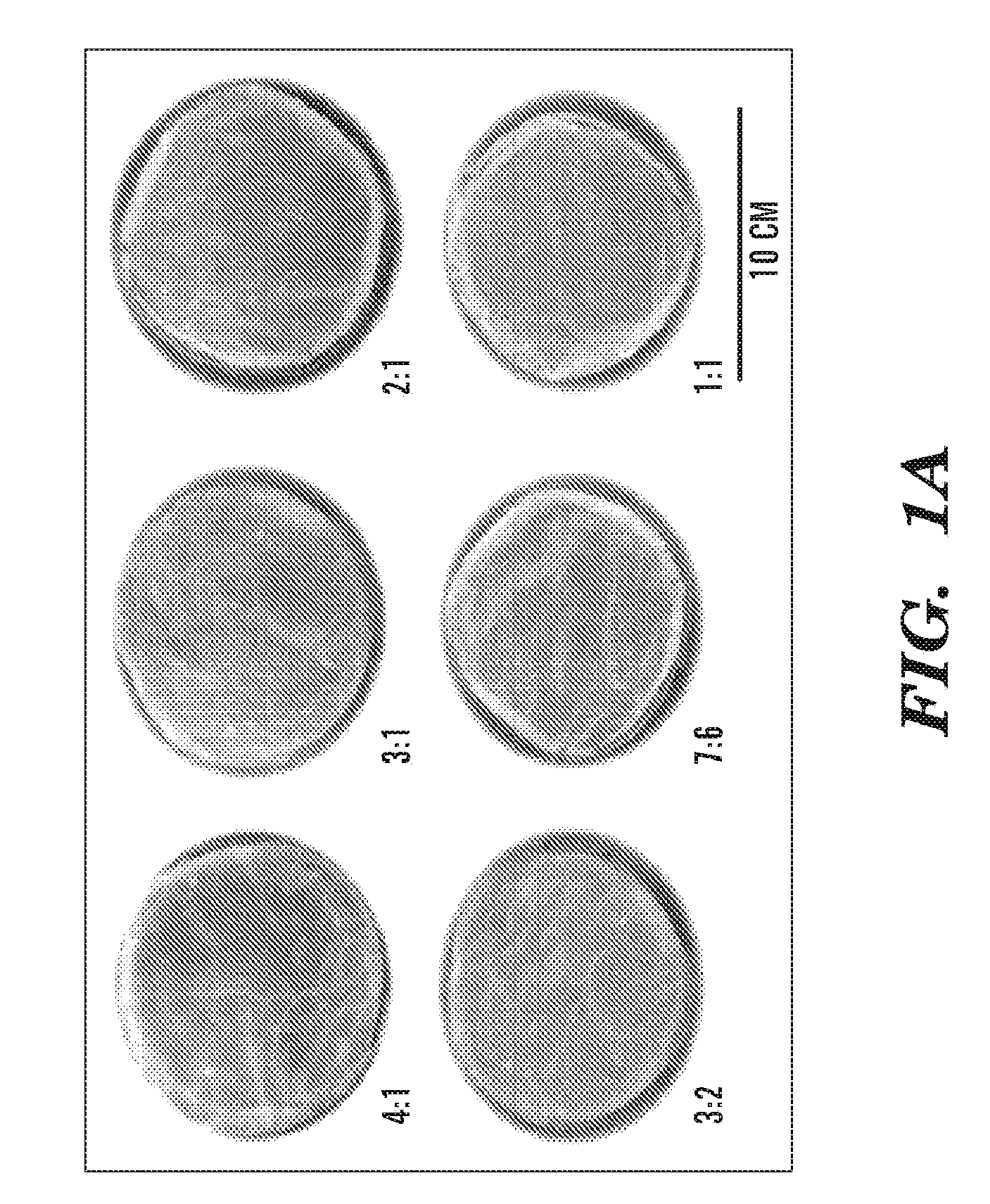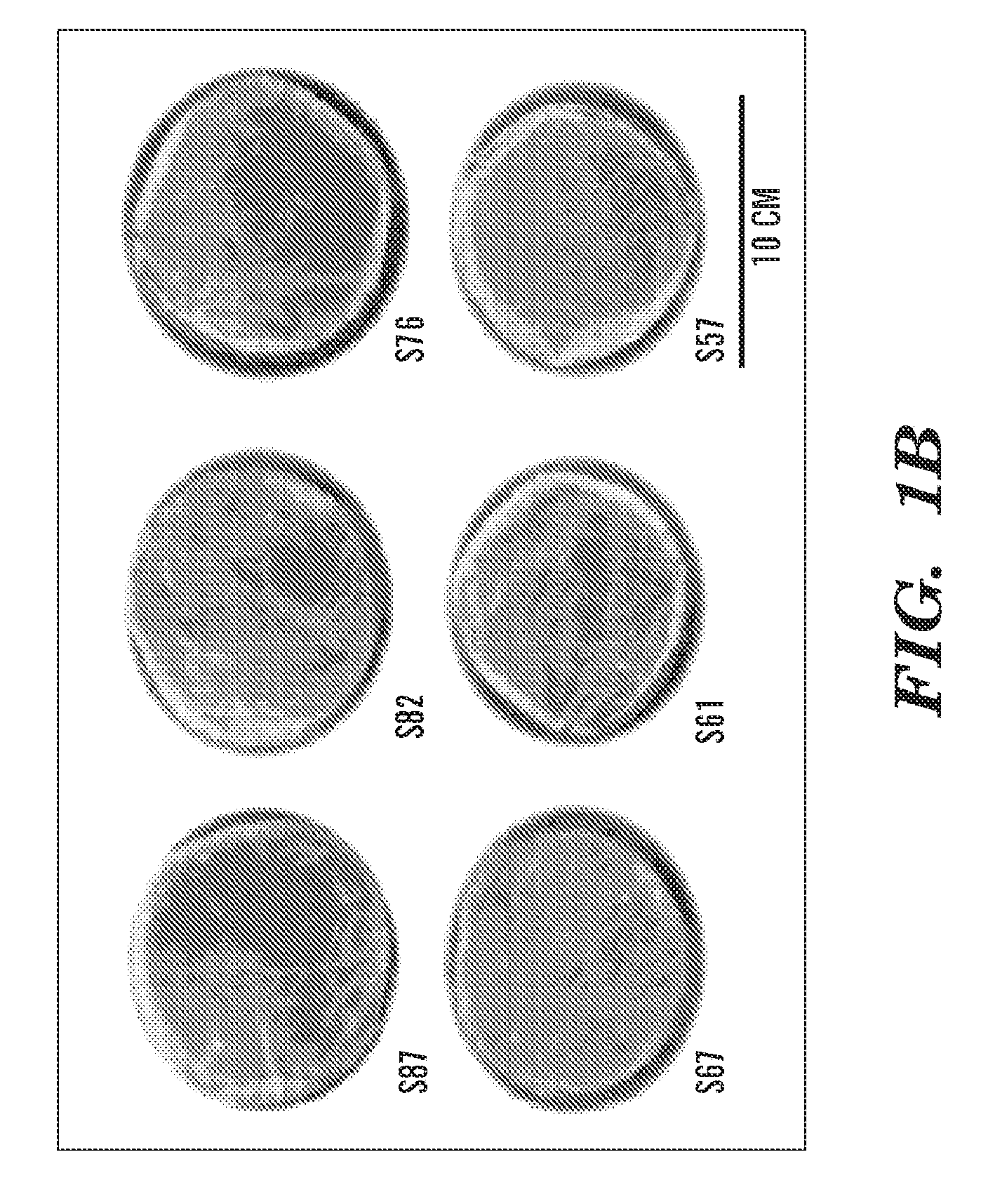Electrospun silk material systems for wound healing
a technology of electrically charged silk and wound healing, applied in the direction of immunological disorders, drug compositions, peptides, etc., can solve the problems of autologous skin grafting limitations, complex and fragile wound healing processes, and the inability to achieve full-thickness burn treatment, etc., to achieve good structural, morphological, biofunctional and biocompatible properties.
- Summary
- Abstract
- Description
- Claims
- Application Information
AI Technical Summary
Benefits of technology
Problems solved by technology
Method used
Image
Examples
example 1
[0160]Materials. Cocoons of Bombyx mori silk (Tajima Shoji Co., Yokohama, Japan) were prepared to generate an 8 wt % silk solution. Wang et al., 2006. Six silk materials were prepared with 4:1, 3:1, 2:1, 3:2, 7:6, and 1:1 w / w silk:PEO (920,000 g / mol) ratio solutions. The 4:1, 3:1, and 2:1 blends contained 5% PEO, while the 3:2, 7:6, and 1:1 blends contained 6% PEO in order to maintain the minimum 7.2% silk / PEO polymer concentration necessary for viscoelastic and surface tension properties to generate stable fluid jets during electrospinning. Jin et al., 3 Biomacromol.s 1233-39 (2002).
[0161]The electrospinning apparatus built for this research followed previously published procedures (Wang et al., 2002) employing a high voltage power supply (Gamma High Voltage Research ES-30P, Ormond Beach, Fla.), a 10 to 60 ml syringe pump (Braintree Scientific 8000, Braintree, Mass.), potential and ground stages, 1.5 mm polyethylene tubing and a 16 gauge 5.08 cm steel capillary tube. See, e.g., WO ...
example 2
Material Characterization
[0167]Fiber thickness and surface topography were characterized using a JEOL JSM 740-1F FE-SEM (Tokyo, Japan) at 1.5×, 6.5× and 12× magnifications (acceleration voltage: 1 kV, working distance: 13.6 mm). Cross-sectional images were taken using 2.5×, 5×, 10×, and 50× magnifications (acceleration voltage: 5 kV, working distance: 6 mm). Cross-sectional samples were cut into 2×5 mm pieces and flash frozen in liquid nitrogen and broken in half using tweezers. Samples were mounted on carbon tape with the cross-sectional surface facing up. All samples were coated with 100 Å Au using the Denten Vacuum Desk IV (Moorestown, N.J.) with the following settings: vacuum: 80-90 mtorr, sputtering set point: 20-30%, deposition time: 2 min. Surface morphology, roughness, and 3D features of the samples were obtained via the PSIA XE-150 AFM (Santa Clara, Calif.), using the Ultrasharp NSC16 / AIBS probe in non-contact mode (resonant frequency: 170 kHz, force constant: 45 N / m). XEI ...
example 3
Water and Oxygen Permeability
[0168]Absorption. Six 2.8 cm diameter test samples were dried with the polystyrene-dish method, placed in sterile 6-well tissue culture treated polystyrene plates and immersed in de-ionized water for 24 hrs to reach swelling equilibrium. The samples were then removed and gently dabbed onto Kimwipe® tissues until a minimal stable pendant drop was maintained at the end of the sample. The saturated samples were then weighed and water absorption and equilibrium water content (EWC) were calculated by the following equations:
[0169]Absorption%=(Ww-Wd)Wd*100%EWC%=(Ww-Wd)Ww*100%
where Ww and Wd are the weights of the wet and dry sample, respectively. Kim et al., 341 Int. J. Pharm. 35-43 (2007). The results of Absorption (%) and EWC (%) are shown in Table 4.
[0170]Oxygen Transmission Rate. The Oxygen transmission rate (OTR) was measured using the Illinois 8001 Oxygen Permeation Analyzer (Illinois Instruments, Johnsburg, Ill.; ASTM 3985-05). Circular 5 cm2 de-i...
PUM
| Property | Measurement | Unit |
|---|---|---|
| thickness | aaaaa | aaaaa |
| pore diameter | aaaaa | aaaaa |
| water absorption content | aaaaa | aaaaa |
Abstract
Description
Claims
Application Information
 Login to View More
Login to View More - R&D
- Intellectual Property
- Life Sciences
- Materials
- Tech Scout
- Unparalleled Data Quality
- Higher Quality Content
- 60% Fewer Hallucinations
Browse by: Latest US Patents, China's latest patents, Technical Efficacy Thesaurus, Application Domain, Technology Topic, Popular Technical Reports.
© 2025 PatSnap. All rights reserved.Legal|Privacy policy|Modern Slavery Act Transparency Statement|Sitemap|About US| Contact US: help@patsnap.com



